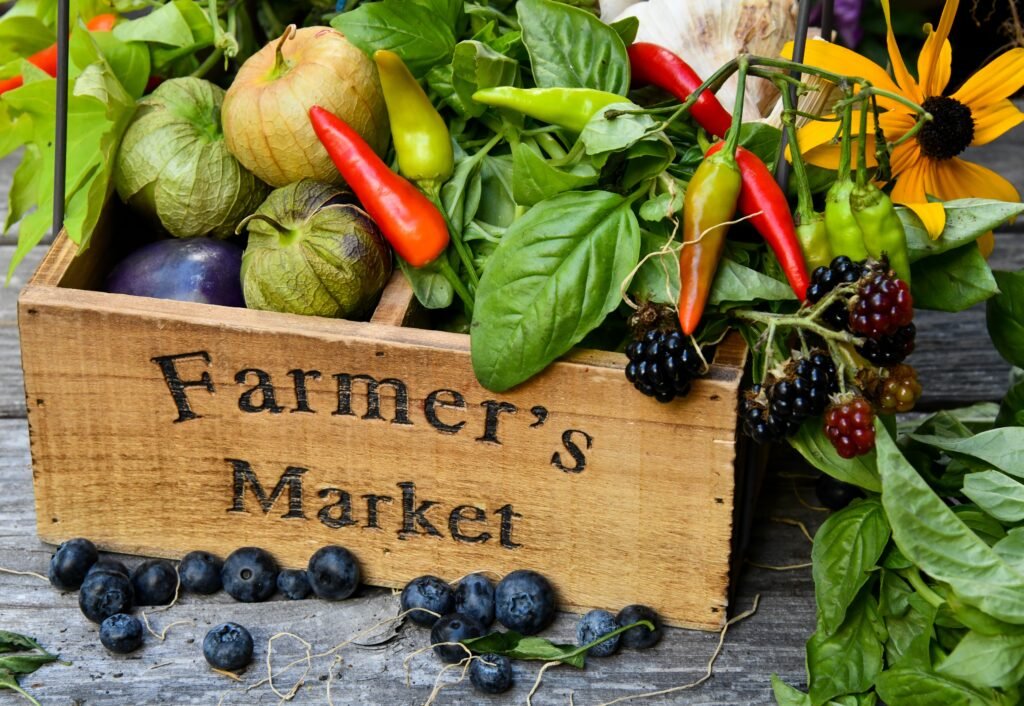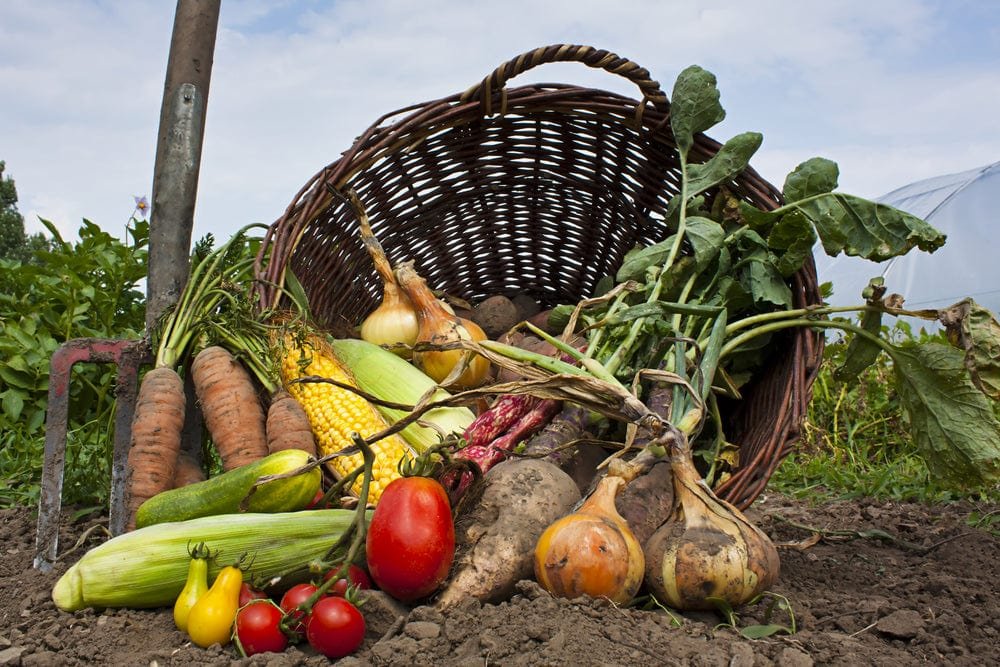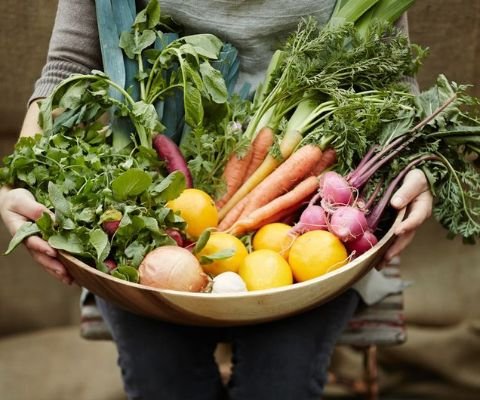In recent years, the importance of sustainable food systems and mindful consumption has gained significant attention. One impactful way to contribute to environmental sustainability, health, and community well-being is by eating locally. Consuming locally produced foods—fruits, vegetables, grains, and other plant-based products—benefits personal health, supports regional economies, and strengthens connections with farmers. This article explores the advantages of eating locally, its nutritional, environmental, and social implications, and practical strategies for supporting local farmers while adopting a plant-based diet.
Understanding Local Food

Local food typically refers to products grown, produced, or harvested within a defined geographic radius—commonly 100–250 miles—from the consumer’s location. Local foods can include fresh produce, grains, legumes, herbs, dairy alternatives, and artisanal plant-based products. By prioritizing these foods, consumers reduce transportation emissions, enjoy seasonal flavors, and contribute to the vitality of nearby farming communities.
Benefits of Eating Locally

1. Nutritional Advantages
Eating locally grown, fresh foods often results in higher nutritional value compared to long-transported alternatives. Key benefits include:
- Enhanced freshness: Local produce is harvested closer to peak ripeness, retaining more vitamins, minerals, and antioxidants.
- Seasonal variety: Seasonal fruits and vegetables provide diverse nutrients throughout the year.
- Reduced preservatives: Locally sourced foods typically require fewer chemical preservatives since they travel shorter distances.
For example, freshly harvested tomatoes, leafy greens, or berries consumed within a day or two of picking contain higher levels of vitamin C, folate, and phytonutrients compared to those shipped from distant regions.
2. Environmental Benefits
Eating locally has a significant positive impact on the environment:
- Reduced carbon footprint: Shorter transportation distances mean lower fuel consumption and greenhouse gas emissions.
- Support for sustainable farming: Many local farmers employ eco-friendly practices, such as crop rotation, organic fertilization, and minimal pesticide use.
- Preservation of farmland: Supporting local agriculture encourages the maintenance of open spaces and green areas, reducing urban sprawl.
By choosing local foods, consumers contribute to climate-friendly practices and help mitigate the environmental impact of global food distribution networks.
3. Economic and Social Impact
Supporting local farmers strengthens regional economies:
- Boosts local economy: Money spent on locally produced food circulates within the community, supporting farmers, laborers, and local businesses.
- Encourages entrepreneurship: Consumers help small-scale farmers and artisanal producers thrive.
- Fosters community engagement: Farmers’ markets, co-ops, and community-supported agriculture (CSA) programs create opportunities to connect with growers, ask questions, and learn about sustainable agriculture.
Investing in local food systems builds a resilient and vibrant economy while strengthening social ties.
4. Connection with Food and Community
Eating locally fosters a deeper connection with food and its source:
- Awareness of seasonality: Consumers learn which fruits, vegetables, and grains are in season, promoting a diverse and balanced diet.
- Mindful consumption: Direct engagement with farmers and markets encourages intentional, conscious eating.
- Cultural preservation: Local foods often reflect regional culinary traditions, allowing individuals to explore and maintain cultural food heritage.
This connection enhances appreciation for the effort and care involved in producing wholesome foods.
How to Support Local Farmers

1. Shop at Farmers’ Markets
Farmers’ markets are ideal venues for purchasing fresh, seasonal, and locally grown produce. Benefits include:
- Direct support for farmers and reduced reliance on intermediaries
- Opportunity to ask about farming practices, organic certification, and sourcing
- Access to diverse, seasonal fruits, vegetables, and plant-based products
When visiting farmers’ markets, consider exploring new produce, asking for preparation tips, and forming relationships with vendors to learn more about sustainable practices.
2. Join a Community-Supported Agriculture (CSA) Program
CSA programs allow consumers to subscribe to a share of a farm’s harvest, receiving weekly or monthly boxes of seasonal produce. Advantages include:
- Guaranteed support for farmers through upfront payment
- Exposure to a wide variety of seasonal fruits and vegetables
- Encouragement to experiment with new recipes and plant-based meals
CSA participation fosters trust between consumers and producers while ensuring a consistent supply of fresh, local ingredients.
3. Purchase from Local Co-Ops and Stores

Local food co-ops and independent grocery stores often prioritize sourcing from nearby farms. Benefits include:
- Convenient access to locally grown fruits, vegetables, grains, and plant-based products
- Support for businesses committed to ethical, sustainable sourcing
- Opportunities to purchase organic or minimally processed products
When shopping at co-ops, read labels, inquire about origin, and choose items that align with local and sustainable practices.
4. Grow Your Own Food
Even small-scale gardening contributes to local food systems and self-sufficiency:
- Herbs, leafy greens, tomatoes, and root vegetables can thrive in containers or backyard gardens
- Gardening reduces the environmental impact of transportation and packaging
- Personal involvement in food production enhances connection to the environment and fosters mindfulness
Community gardens also offer opportunities to collaborate with neighbors, share produce, and educate others about sustainable agriculture.
5. Advocate for Local Food Policies
Supporting policies that encourage local agriculture strengthens the food system:
- Encourage local schools, hospitals, and businesses to source produce from nearby farms
- Advocate for farmers’ market development, subsidies for small-scale farms, and organic certification programs
- Participate in community initiatives promoting sustainable farming and local food education
Engaging in policy advocacy ensures long-term support for farmers and environmental sustainability.
Plant-Based Focus for Local Eating

A plant-based approach enhances the benefits of eating locally:
- Fruits and vegetables: Seasonal produce maximizes flavor, nutrient density, and freshness
- Whole grains: Locally grown grains such as wheat, oats, and barley provide essential fiber and energy
- Legumes: Beans, lentils, and chickpeas grown regionally contribute protein and versatility
- Nuts and seeds: Almonds, walnuts, sunflower seeds, and pumpkin seeds offer healthy fats and additional nutrients
Plant-based meals using local ingredients support health, reduce environmental impact, and create delicious, sustainable dishes.
Sample Plant-Based Meals Using Local Ingredients
- Seasonal Salad Bowl: Mixed greens, roasted root vegetables, apples, walnuts, and a citrus dressing
- Vegetable Stir-Fry: Seasonal vegetables sautéed with local herbs, garlic, and olive oil
- Grain and Bean Bowl: Quinoa or brown rice topped with seasonal vegetables, beans, and tahini dressing
- Fruit and Nut Breakfast Parfait: Layered plant-based yogurt, fresh seasonal fruit, and locally sourced nuts
These meals illustrate how local, plant-based ingredients can be integrated into everyday diets while supporting farmers and sustainability.
Overcoming Challenges in Eating Locally
While eating locally has many benefits, challenges can arise:
- Seasonal availability: Plan meals around seasonal produce to maximize freshness and nutrition
- Limited variety: Experiment with new fruits, vegetables, grains, and herbs to maintain diversity
- Higher cost: Prioritize seasonal items, join CSA programs, and grow personal gardens to reduce costs
- Accessibility: Explore farmers’ markets, co-ops, community gardens, and online platforms for local food
With creativity and planning, these challenges can be addressed while maintaining a sustainable, plant-based approach.
Conclusion
Eating locally offers profound benefits for personal health, the environment, and community well-being. By prioritizing fresh, seasonal, plant-based foods, individuals enhance nutrient intake, reduce carbon footprints, and support local economies. Strengthening connections with farmers and food sources fosters mindfulness, encourages sustainable consumption, and preserves regional culinary traditions.
Practical strategies for supporting local farmers include shopping at farmers’ markets, joining CSA programs, purchasing from local co-ops, growing personal gardens, and advocating for policies that promote sustainable agriculture. Integrating these practices into everyday life not only benefits individual health but also contributes to the resilience and vitality of local food systems.
Through conscious choices, plant-based diets, and active support for local agriculture, consumers play a vital role in creating a sustainable, nourishing, and community-focused food culture. Eating locally is more than a dietary choice; it is a commitment to environmental stewardship, economic support, and holistic well-being, proving that mindful food consumption can nourish body, community, and planet alike.
